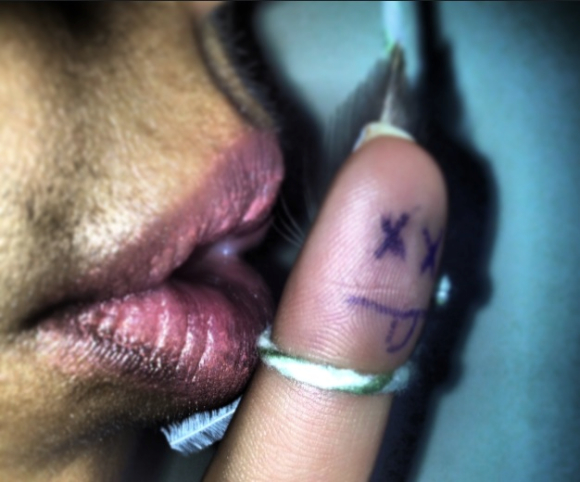Suicide Chronicles, A Conversation Native People Need to Have
Silence kills.
Suicide is a HUGE problem within our Native communities, yet it’s something that we barely speak about. I put myself in this category as well—even though we’ve had several people within my family commit suicide, my family has never gotten together specifically to talk about either 1) why these suicides keep happening, or 2) how we can prevent further suicides from happening in the future. While sexy political topics dominate headlines, this life and death issue that affects the heart of Indian Country—our homelands—hardly ever gets any press. We haven’t yet collectively tackled this crucial question, “Why do we do this to ourselves?”
We are not having these necessary conversations.
Now, don’t get me wrong—there are Native people and organizations who do absolutely amazing things to shed light on suicide as a priority and to remember those Natives whose lives were tragically cut short by suicide. Absolutely. Thank goodness we have those folks and organizations memorializing and acknowledging that it’s going on within our communities at alarming rates; those good folks try to push the topic. Yet, most of the time the rest of us don’t acknowledge the constant presence of suicide within our communities until after the fact. Perhaps it’s a funding issue. Perhaps it’s a priority issue. In either event, we simply are not proactively having intentional and awkward conversations about suicide—we avoid those; those painful and weird conversations with our 5 or 6 or 7 or 12 year old sons, daughters, nieces and nephews, or even our older siblings ... until something goes terribly wrong.
Those conversations suck—like talking to our 12 year old sons or daughters or nieces and nephews about sex. But we gotta have them. 12 year olds DO get pregnant.
Let’s make this very, very clear: TALKING about suicide does NOT increase the likelihood of someone we love committing suicide. That’s fact. IN FACT, if there is an effect at all, it will only DECREASE the likelihood of someone we love committing suicide.
We can’t wait for the “right time” or the “right person” to talk to our kids about suicide. This IS the right time, we ARE the right people until better people come along.
There is no wrong time to talk about suicide. Period. ESPECIALLY for Native people. We CAN’T simply bury our heads and act like it doesn’t affect us, as if our loved ones who committed suicide were just anomalies or accidents that we don’t talk about.
No, we need to talk about this. Badly. Native people are committing suicide at a rate that is three times the national average, and yet we seem to be hiding our heads in the sand.
Historically, many of our communities had people who were trained to guide these kinds of awkward conversation in the place of the biological parents. No, the conversation wasn’t specifically about suicide (I don’t think), but these proxy parents were second mothers and second fathers to children, filling in where the parents had difficulty. Consider this that—simply an honest conversation from concerned family members. We’re going to do our tiny, little part to kill the silence that’s been killing our people.
Therefore, this is the introductory piece of a five-part series to talk about suicide within our Native communities. We’re gonna talk science, but we will also feature stories about how it’s plagued our communities. We’ll also highlight some positive things that are happening to reduce suicide and its effects. We’re not scientists—heck, we’re not social workers! Still, we live within our homelands and travel throughout Indian Country, we’re concerned with the wellness of our people, and we see the devastating effects of suicide WAY too often. Therefore, we’re going to do what we can to push this conversation. Specifically, we’re going to include pieces that contemplate:
- Why suicide’s effects are so extreme within Native communities
- The intersection of diabetes/sugar/depression and suicide within our communities
- The best practices to reduce the effects of suicide within our communities
- Some straight-forward journalistic stories about suicide straight from members of our communities.
Obviously suicide is a very complex and multi-faceted epidemic. Yet, despite suicide’s complexities, there are bite-sized steps that we can implement that will help reduce suicide’s reach within our communities. We CANNOT make suicide a bogeyman—suicide ISN’T a bogeyman. Bogeymen cannot be beat. With suicide, Native people CAN beat this if we simply do the research and have the honesty to take the steps. We are not victims—it is a long road, but Native people WILL win if take the first step in this very long journey. The very first step?
Talk about it. Don’t be scared. It won’t hurt to talk. But it WILL hurt when we don’t talk about suicide. We see that literally everyday.
Silence kills. But we’re gonna get loud and beat suicide together. Let’s talk. Awkwardly. But necessarily.
ABOUT THE AUTHORS: Chelsey Luger is from the Turtle Mountain Chippewa Tribe & Standing Rock Lakota Nation in North Dakota and focuses on spreading ideas for Native health and wellness. Follow her on instagram at chelswhoelse or twitter @CPLuger. Gyasi Ross is from both the Blackfeet and Suquamish Reservations and is a concerned dad, uncle and big brother who understands the need for awkward conversations. www.cutbankcreekpress.com Twitter: @BigIndianGyasi.
Read more at http://indiancountrytodaymedianetwork.com/2014/09/18/suicide-chronicles-part-1-5-conversation-native-people-need-have-156954
